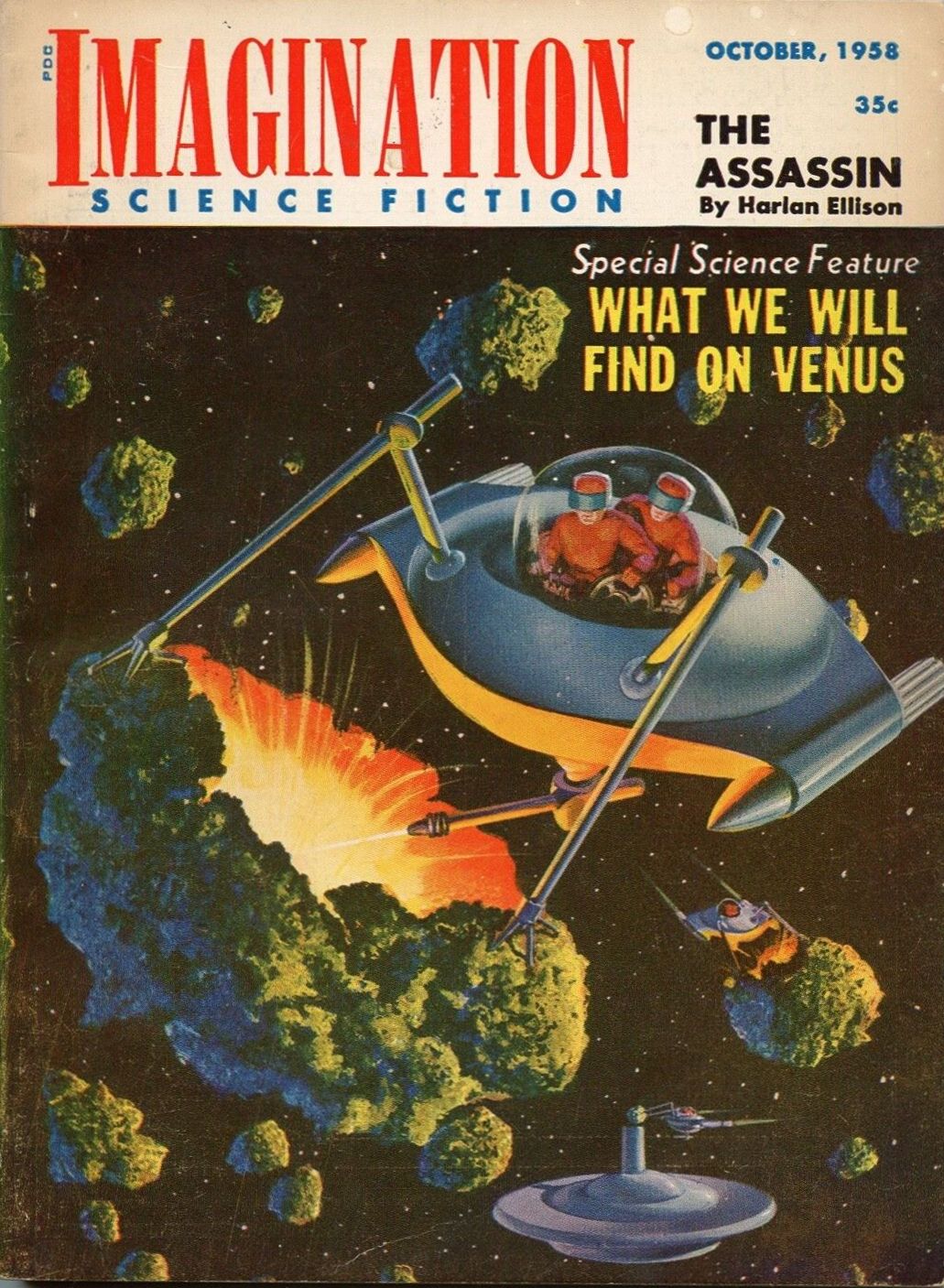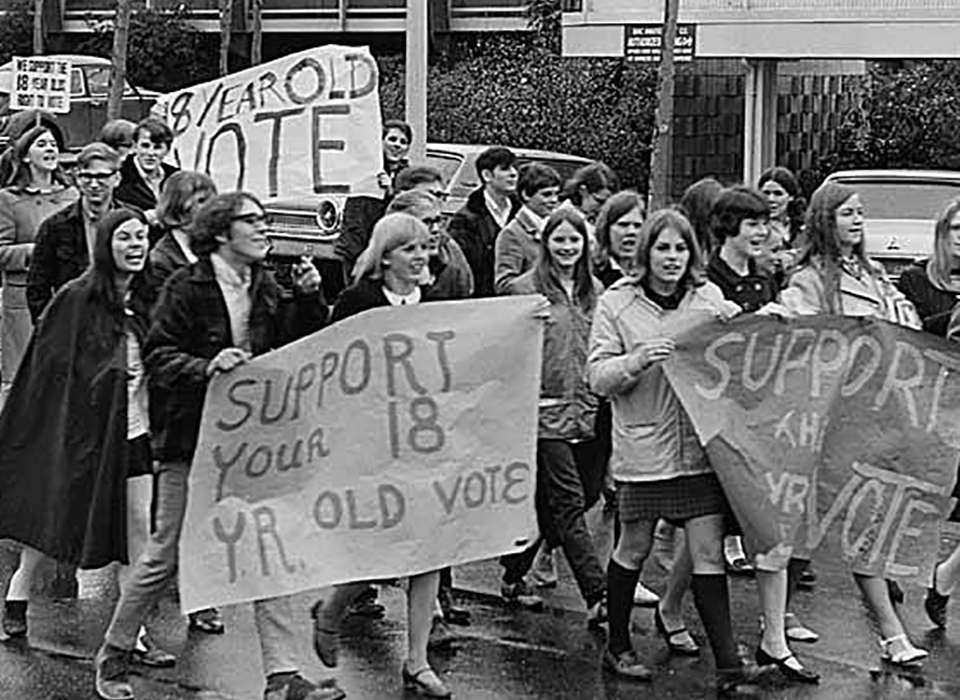
by Gideon Marcus
We've got a triple (maybe quadruple) play for you this morning. Dig in and enjoy the bounty!
Fail-Safe, by Eugene Burdick and Arthur Wheeler

With so many new books coming out, it's not often that we at the Journey can devote inches to older titles. However, the original Fail-Safe has been staring me in the face for the past four years, and when I finally picked it up, I found I couldn't put it down. Morever, the events depicted in the book are supposed to take place in 1967, so what better year to review it?
If you've seen the movie, then you know the plot of the book: mechanical malfunction causes a flight of bombers, responding to a false threat, to head irretrievably on an atomic raid of Moscow. Indeed, the movie is in many ways a shot-for-shot rendition of the print version. The differences pertain to the medium: we get several mini-biographies of the main characters, including the translator, the war-monger, the self-loathing SAC General, the commander of the Omaha base. There are also occasional, Marooned-style depictions of the technology involved, in lurid detail.
But the events are the same, the dialogue is largely the same, the agony is the same. Fail-Safe is the story of breakdown–of huge computerized networks failing for the disruption of tiny components, of people failing when confronted with clashing instructions. Despite the fundamental tragedy of the story, it is ultimately a hopeful book. It says that people made this death trap we live in, and only people can get us out of it. And thankfully, there are still good people left in the positions that matter.
Indeed, the main divergence between the book and movie is that the two national leaders involved are not generic statesmen but real people: Kennedy and Khruschev. This is a little jarring given that neither outlasted the book's publication by very long. However, it's also fundamental to the plot. Burdick and Wheeler ascribe a basic competence and goodness to these particular national leaders, qualities that keep the world from exploding when all factors say it should.
Were the two "K"s given too much credit? Are LBJ and Kosygin men we can trust to steer us clear from the edge of disaster? Those are questions that can only be answered by biographers in the first instance, and in the moment for the second. May summits like the recent one in Glassboro ensure the latter never needs answering.
Four stars.
The Invaders, by Keith Laumer

Have you seen The Invaders? It's a dopey riff on The Fugitive, instead of Richard Kimball running from the law for a murder he didn't commit, at the same time tracking down the real killer, it's about an architect running from alien invaders, while he also plans a counterattack.
The Fugitive was, itself, a riff on Route 66, about two hunks Kerouac-ing across the country doing odd jobs trying to find themselves. The Fugitive works because Kimball has a reason to keep moving, but, as a doctor, a moral obligation to help people wherever he goes. There's a reason the show lasted four years.
The Invaders doesn't work for lots of reasons — being an architect doesn't fundamendally involve protagonist David Vincent in anything. The aliens are laughably inept, betraying themselves with crooked pinky fingers, and yet Vincent can never really get anyone to believe him.
It's a dumb show.
So, of course it has a tie-in novel. Keith Laumer probably wrote this one in his sleep and happily pocketed the $2000 royalty to pay for his next trip to London. It is cliché-ridden and tired, a typical potboiler with a B-movie plot and science decades out of date.
It's still better than the show.
It's better because Laumer's Vincent discovers the aliens through canny investigation rather than stumbling on them at an old diner (tracking several seemingly unrelated factory production orders; once the widgets are assembled, they make a ray gun). It's better because Laumer is a competent action writer. It's better because the book is highly divergent from the show, only retaining the name of the hero, the plot of invasion (even the aliens are quite different — their high temperature gives them away), and the William Conrad-esque narration that precedes and succeeds the three vignettes included in this first volume.
Three stars. Why not?
Belmont Double B50-779

The second Belmont Double, poor imitation of the Ace Double follows a similar format to the first: one old novella combined with a newly commissioned one.
Doomsman, by Harlan Ellison
These days, Harlan's name is associated with avante garde stuff, the cutting edge of the New Wave laden with emotion and impact.
Back in the late '50s, when he was cranking out material for the profusion of SF digests, Harlan's work was of more variable quality. Doomsman originally came out in the last issue (October 1958) of Imagination as The Assassin, and it is lesser Ellison.

A hundred years from now, the Western Hemisphere is dominated by the AmeriState, a totalitarian regime that ascended in the ashes of an atomic war. Power is maintained by an assassin's corps, of which one Juanito Montoya, abducted from the Pampas of Argentine in his early manhood, is a typical example. He can kill in a thousand different ways, endure most any climate, and he lacks even the rudiments of empathy or civilization.
But in one way, he is different from his peers, for he comes to learn that he is the son of Don Eskalyo, a princeling who would topple the AmeriState. Once in possession of this knowledge, he resolves to stop at nothing to meet Eskalyo and join his forces. Except, of course, that's just what the AmeriState wants him to do…
Doomsman is a brutal, unpleasant story, rife with torture and grossness. In particular, I could have done without the introduction of the lone female character, the nude and violated (but still desirable, of course!) imprisoned young woman who proves the linchpin to finding Eskalyo. Not only did I find her character a sop to the more lewd readers, but though Ellison makes it clear that she endured three months of the worst tortures without cracking, she succumbs to Montoya's techniques immediately. And we never learn what these techniques are. Obviously, it's an author's trick to imply how effective and monstrous these methods are, but it just comes off as implausible and a cheat.
The one thing Doomsman's favor is it is never dull. That's not enough. 2.5 stars.
Telepower, by Lee Hoffman
Lee Hoffman is a name I've heard a lot in the fanzines, but I've never met her because she lives in Chicago. It's always a delight to see a fan turn into a (filthy) pro, and the main reason I picked up this Double is because of her byline.
Her book takes place in and around the post-atomic ruins of Cleveland, which have settled into a sort of medieval complacency, its inhabitants placid and staid. The defense of the city is left to the soldiers, an almost robotic breed of human, who live outside the city walls. The main threat to Cleveland isn't other men–it's waves upon waves of rats. The story opens up with such an attack, and we are introduced to Beldone, one of the many anonymous drones in the ranks.
Beldone, unlike his companions, develops a spark of curiosity, of individuality. This terrifies him since such is a sign of illness, and the remedy for illness is execution. We quickly learn that this spark is externally created: inside the city dwells the beautiful, and bored, Illyna. In a fit of ennui, she developed the embers of a psychic power, initially telepathic in nature but ultimately controlling. Beldone was her first contact, and through him, she seeks to learn more about the world she inhabits–and to find a way to control it.
There's a lot of disturbing stuff in this novel. Folks who are turned off by depictions of violence, depictions of rats, and/or depictions of telepathic mind control may wish to give this piece a miss. It's also not a happy story, even when it is triumphant. But it is an interesting, well-written one, and I look forward to more of Hoffman's work.
3.5 stars.






![[July 12, 1960] The New Generation (August 1970 <i>Fantastic</i>)](https://galacticjourney.org/wp-content/uploads/2025/07/COVERSMALL-672x256.jpg)
![[May 12, 1970] War and Peace (June 1970 <i>Fantastic</i>)](https://galacticjourney.org/wp-content/uploads/2025/05/COVERSMALL-672x372.jpg)


![[October 14, 1967] Threat level: High (October Galactoscope)](https://galacticjourney.org/wp-content/uploads/2022/10/671014covers-672x372.jpg)





